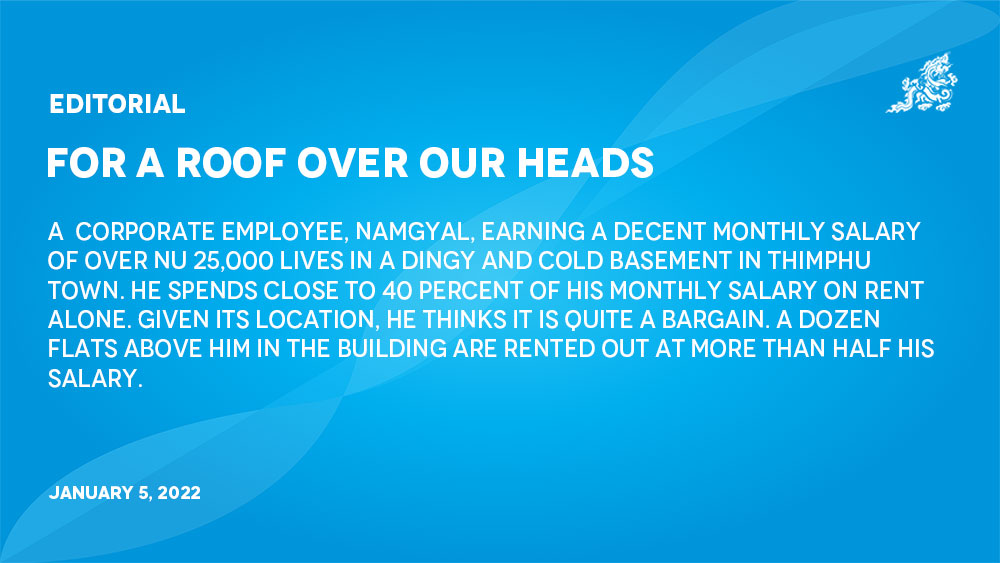A corporate employee, Namgyal, earning a decent monthly salary of over Nu 25,000 lives in a dingy and cold basement in Thimphu town. He spends close to 40 percent of his monthly salary on rent alone. Given its location, he thinks it is quite a bargain. A dozen flats above him in the building are rented out at more than half his salary.
For the salaried group in the major urban towns, house rent is the most expensive monthly expenditure. The burden doubled or tripled for many who were laid off or had totally lost their source of income after the Covid-19 pandemic hit the country.
Today, around 58 percent of Bhutanese reside in a rented house, with a majority of households facing a moderate to severe rent burden, paying more than 40 percent of their monthly income in house rent.
Internationally, a baseline of 30 percent of the household income is taken as the maximum proportion of income available for payment towards housing rent.
Families adjust and reside in smaller apartments or share units cutting costs and compromising on their quality of living and that of their children.
We still witness the squatter population increasing in our major thromdes. Most are migrants from other parts of the country, a part of the urban drift which we helplessly observe. The land in this part of town is privately owned, the huts rented. Some of these huts have been there so long that they have even been inherited.
It is a complex situation that has not seen a solution. But the basic problem is that there is nowhere else for this migrating populace, growing every day, to stay.
These are not new problems. The broader issues, however, are rural-urban migration and urban housing. And, at this stage, both appear to be out of control.
Accepting that we will also face international trends and more than 70 percent of the world population is expected to move to cities this century, urban planning is rapidly falling behind the already visible trends. The housing problem is already acute in major thromdes and in some dzongkhag capitals.
An irony is that there is no shortage of raw materials in Bhutan. Over 72 percent of our country is forest, we export cement, and we see stones all around us; yet building a house is an expensive affair.
Our financial institutions are suffering from excess liquidity but the interest rates are so high only those with properties or fixed assets can afford them. The social responsibility of public institutions has not yet been fully realised although a need like subsidised housing today might save more hazardous costs in the future.
Therefore, housing is out of reach for the average urban residents and there is no light visible at the end of the tunnel. A project like the Changjiji low-income group housing, for example, has met with some success. Unless such projects are pushed hard it is likely that the population seeking housing will far exceed the capacity when they materialise.
So we must wait. Meanwhile, the squatter population and rents continue to rise.


